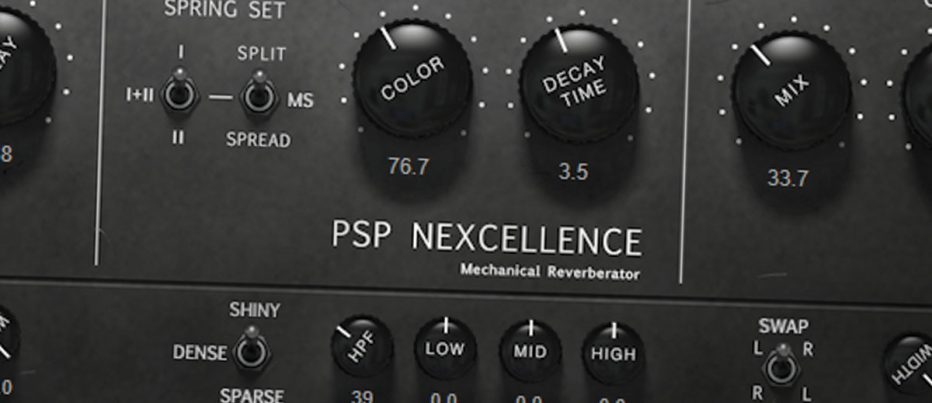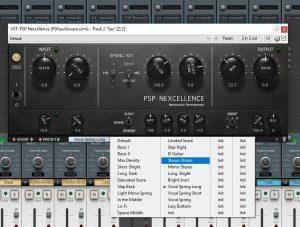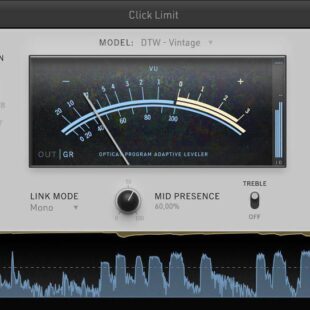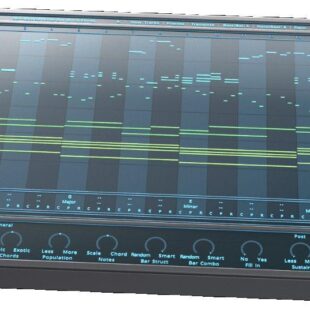PSP Audioware Nexcellence – Twice the Vibe
Hi and welcome to Music Nation, this week we’re looking at a rather clever little reverb device called Nexcellence. With a pedigree of amazing reverb plugins this time PSP Audioware looks to bring a modern twist to an old-school effect.
(Review updated March 2021) PSP Nexcellence is a necklace-type reverb plugin…and, after a quick Google search to find out exactly what that was, turns out they mean spring reverb. Finding decent emulations of these devices is difficult now, due to the industry mostly favouring hi-resolution digital reverbs. The traditional place for spring reverbs is on your vintage guitar amps, as the twangy metallic sound suited the style back in the rock’n roll days.
Usually, you wouldn’t immediately leap to applying multiple spring reverbs to your session tracks unless you’re looking for something really wacky. PSP Audioware has created a contemporary twist to the norm, with sophisticated m/s mixing, limiting, width and delay offset controls. The result is still somewhat retro sounding, but now with more control over all the mud and metallic artefacts of the original device – a retro sound that doesn’t sound too retro, if you get my drift.
Let’s jump in and check it out.
Overview
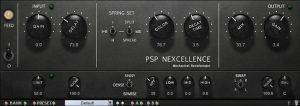 There is a lot to take in when first presented. The black-on-black UI looks cool with its huge Bakelite-style knobs, but unfortunately isn’t sizable, so looks a little small on our widescreen monitor. All of the controls are clear and easy to read with a menu at the bottom containing a good selection of starter presets. Though the signal flows from left to right as expected, there are many situational controls to consider depending on your project.
There is a lot to take in when first presented. The black-on-black UI looks cool with its huge Bakelite-style knobs, but unfortunately isn’t sizable, so looks a little small on our widescreen monitor. All of the controls are clear and easy to read with a menu at the bottom containing a good selection of starter presets. Though the signal flows from left to right as expected, there are many situational controls to consider depending on your project.
Following the signal chain, you get the input and output gain knobs and opposing sides of the UI, followed by a delay control for offsetting the dry and wet signals. A pair of ‘swing set’ switches for choosing either spring one or two, or a combination of both. In duel mode, you can then choose from split which sends spring one left and spring two right, a spread which equally mixes the two, or MS, which is a mid/side processed wet signal. You can control the stereo spread of the input signal with the width knob, which also increases the gain of the stereo side signal when you’re in MS mode.
The large colour dial adjusts the timbre of the wet signal, more on that in a minute. The decay is basically the reverb size or length of the reverb tail. Mix basically controls the wet signal balance, but more on that in a second too. Along the bottom, you have an input wet signal limiter, DSP quality selection with the dense switch, a three-band EQ with a highpass filter, a phase inverter and finally output wet signal balance and width…phew. For what is traditional quite a simplistic device, there sure are a lot of controls on Nexcellence to work your way through.
Road Test
Nexcellence is an interesting reverb but a little challenging to control at first. Your natural instinct is to turn up the decay and delay times which will result in a very heavy wash of spring verb, which may be what you’re after, but most likely way too heavy-handed. Ignoring the in and output gain controls, and to a less degree the delay, your main focus should be on the limiter, colour and mix controls.
The colour dial adds very subtle air to the high end and warmth to the low, almost like a timbre enhancer. You can achieve a small amount of 3-dimensional depth as well, which I found helps to bring forward elements you’ve applied it to in your mix. Behind the scenes, there is quite a lot going on, including reverb tail reflections, damping and slight saturation effects. Where it becomes tricky to judge is the control is totally input dependent, so the harder you drive the input wet signal the more pronounced the effect is. But generally, this can be used clockwise to bring forward with more air, and anticlockwise to send back with more warmth.
The mix control feels a little unusual and can be quite jittery to use. Again, totally input dependent, so signal amplitude changes will totally affect the character of the mix output. In essence, it balances the wet and dry signal but responds like a bell curve. There is a slow ramp up and ramp down, with the most prominent results occurring around the centre of the sweep.
Finally, the limiter affects the input wet signal after the input gain stage and is crucial to obtaining different characteristics from the device. The amount of limiting you apply has a dramatic effect with the corresponding colour and mix controls. Due to the nature of the beast, the twangy whipping sound spring reverbs are known for is unavoidable on high dynamic signals like snare or guitar, but I found mostly very smooth and creamy results from pushing both input gain and limiting into the red, removing much of the fairly harsh nature of the spring effect, typically reducing the artefacts and making it sound a lot more modern.
Other controls like the EQ are fairly self-explanatory, the density switch allows you to swap between shiny, dense and sparse – or in other words, high, medium and low DPS. There is no discernable difference between the settings, and the performance meter only displayed a 1% difference between high and low, so not something that warrants too much attention unless you’re pushing many instances.
The spring set switches are interesting to play with, and you’ll get different tonal qualities for different signal types. In general, I found Spring 2 a little darker sounding but tended to go for both together for the best overall sound. Running in split mode introduced some weird warbling characteristics at low decay times I didn’t like, but spread sounds great as does MS mode, however, there are no advanced controls for altering the mid or side signals, just the width knob which controls the gain of the side signal.
Finally, the output section features pan and width controls that only affect the wet reverb signal. I got some interesting effects by automating these with some sound design loops.
Have a quick look at a rock mix using Nexcellence as the only effect on each channel and master bus.
In Use
PSP Nexcellence is not an effect you can rely on to deliver the same results constantly. Being totally dependent on signal input, It’s like an old compressor, the more you feed it, the more things get interesting. There is a balancing act required to achieve the results and I think that’s what I like about it most. It’s a very organic feeling like you’re in full control with no digital hand-holding going on in the background.
Nexcellence certainly excels at the retro, slapback rockabilly rebel style, but there is plenty of flexibility to apply more contemporary, clean-sounding results if you’re clever with the controls. Trying to force too much effect out of the device results in excess springy whip artefacts on loud dynamics I’m not a fan of, so a gentle approach works wonders for nearly any source material. It makes for a great full mix ambient wash, perfect for placing the entire mix into a room, or cave environment if you push too hard.
It doesn’t have the longest tail you’ll hear on a reverb, so better suits rock music applications. Its amazing on vocals and I quite like it as a master bus effect to add a little vintage blur to a mix, especially a rock and roll tracks. Of course, on rock guitar is perfect, something my Gretsch was made to go with.
Conclusion
A very smooth and rich tone for what might have become somewhat untrendy to use these days as a reverb effect. Nexcellence is certainly capable of some pleasing modern-sounding results when used subtly, and has a distinct vintage character when you pull back the limiting and boost up the delay controls.
The limiter, EQ and balance controls are all welcome tools to help sculpt out more controlled results, and though there are some interesting stereo widening options with the MS controls, they are very subtle and not an area I would highlight in the plugin. $149 is quite pricey for just a spring reverb, but quite good value for Nexcellence considering the flexibility and quality.
PSP Audioware has an excellent reputation for producing high-quality processors, and though this might be a little more specialised than your standard bread-and-butter verb effects, it certainly brings mojo and character that is difficult to find elsewhere. The somewhat unpredictable results are dependent more on creative twiddling than precise calculations, which might be a sticking point for anyone looking for a go-to device that sounds the same every time it’s applied. If, however, you’re after a flexible spring reverb with plenty of colours that are not stuck back in the ’60s, Nexcellence is your next wise purchase.
This and other PSP Audioware plugins have a full 14-day demo version available, so download it and have a play. Full details and purchasing options right here www.pspaudioware.com
Like the review? Shout us a cup of coffee!

